

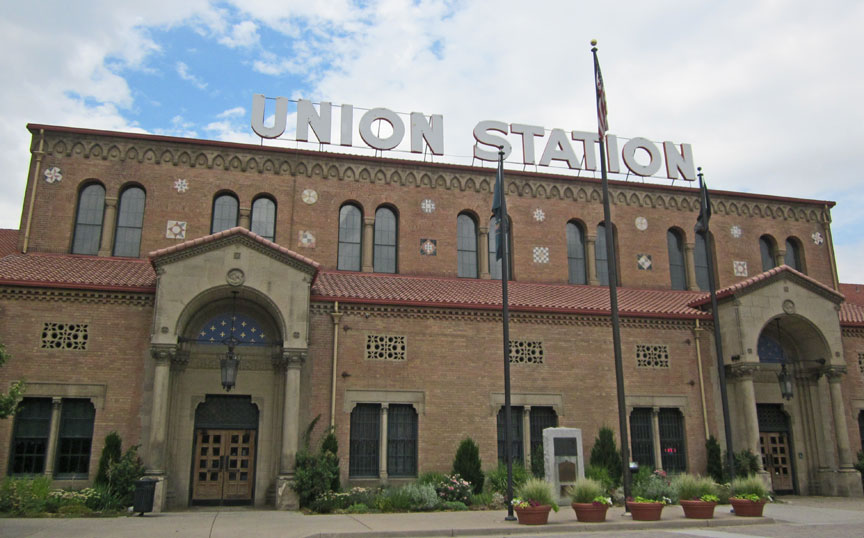
Union Station in Ogden, Utah, also known as Ogden Union Station, is located at the west end of Historic 25th Street. It was formerly the junction of the Union Pacific and Central Pacific Railroads.
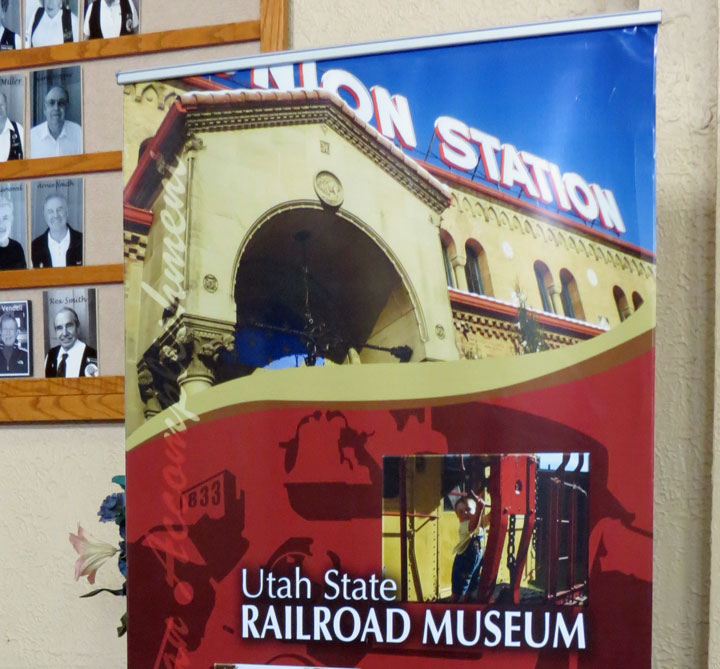
Utah State Railroad Museum
Although the Station no longer serves as a railway hub, it is the heart of Ogden and remains a gathering place for the community. The museums housed at the Station include the Utah State Railroad Museum, the Eccles Rail Center, the John M. Browning Firearms Museum, and the Browning-Kimball Classic Car Museum. Gifts at the Station offers unique gift ideas and a variety of museum related items, books, prints, jewelry and souvenirs. Gallery at the Station is a for sale exhibit that features local and regional artists every month. The Myra Powell Gallery features traveling exhibits and the Stations permanent art collection. Union Station Research Library has an extensive collection of historic Ogden photographs and documents available to the public. Also housed inside the building are the Union Grill Restaurant, U.S. Forest Service Public Lands Information Center, and Warren's Train Shop.
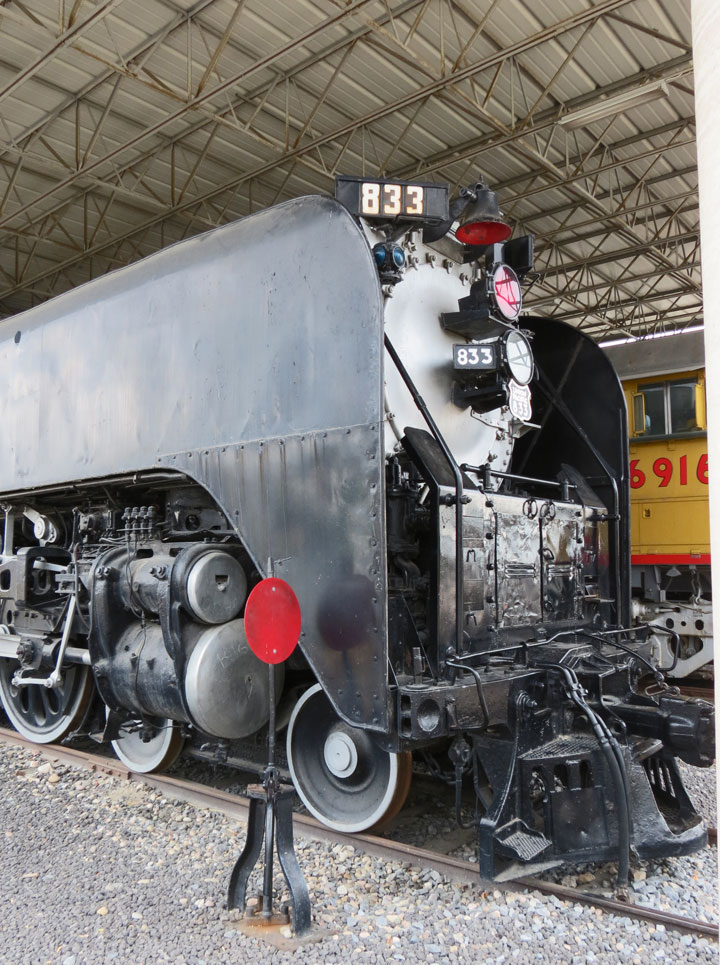
On March 8, 1869, Union Pacific came to Ogden on its way to Promontory Summit to
meet the Central Pacific, thus completing the transcontinental rail line. Four
cities near this location, Corinne, Promontory, Uintah, and Ogden, competed with
each other for the opportunity to house the train station that would be the
junction for railroad travel in the Intermountain West. Promontory and Uintah
lacked the necessary resources to house the Station. Corinne and Ogden competed
for many years for the "Junction City" title, until Brigham Young donated
several hundred acres of land to the two railroads on the condition that they
build the yards and station there.
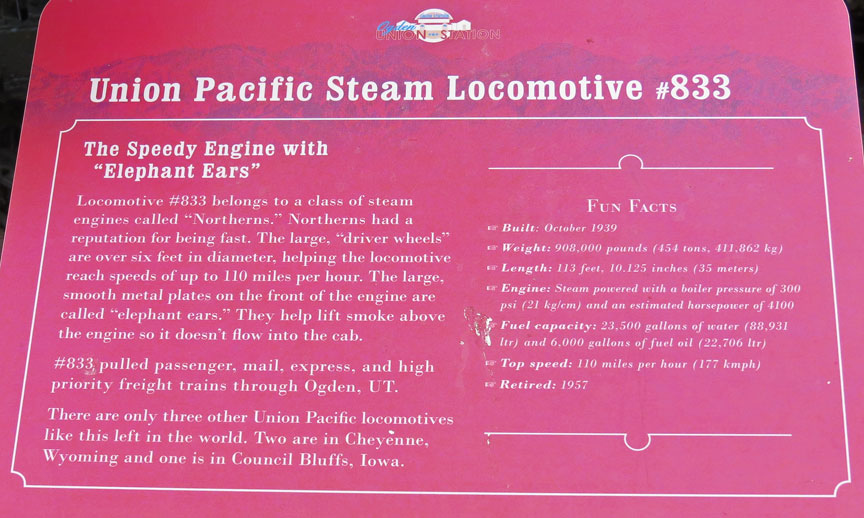
The first station was built in 1869. It was a two-story wooden frame building
built on a mud flat on the banks of the Weber River. The building soon became
inadequate, being also the facility for the narrow gauge Utah Central Railroad
(later Oregon Short Line) and the narrow gauge Rio Grande Western (later Denver
& Rio Grande Western). Local newspapers complained about, among other things,
the quarter mile of wood boardwalk required to traverse the swampy ground to
reach the station. In response to these worries the Union Pacific and Central
Pacific organized the jointly-owned Ogden Union Railway & Depot Co. to oversee
the construction and management of a new Union Station. A new structure,
considerably larger than the old and constructed of brick, was built in 1889 and
served the community until it burned in 1923. It was designed in the Romanesque
style, with a large clock tower in the center. This building, in addition to
serving the needs of the railroad, also contained 33 hotel rooms as well as a
restaurant, barbershop and other conveniences for the enjoyment of the traveler.
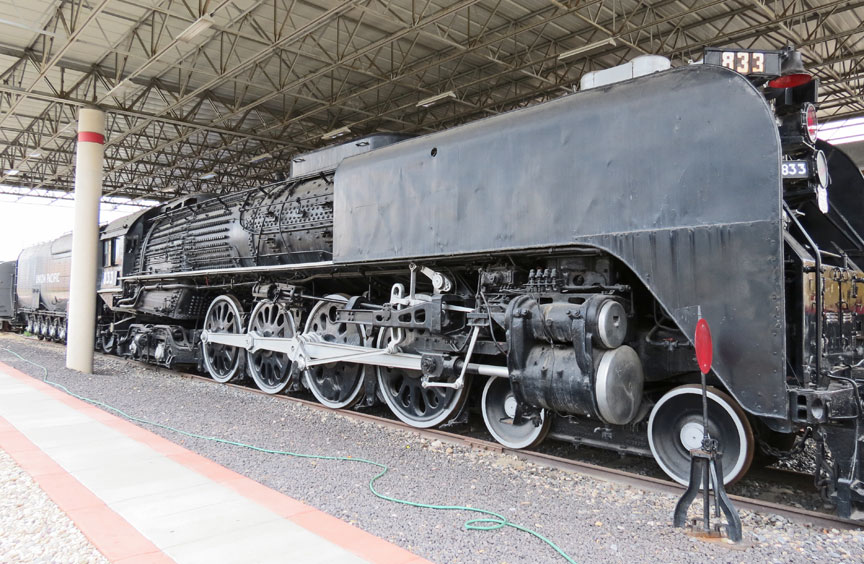
In 1923, a hotel room in the depot caught fire, which quickly spread throughout
the building. The blaze was unable to be controlled, and the depot burned to the
ground, leaving the walls and clock tower standing in a fragile state. No deaths
or injuries were reported, and work continued inside the first floor to some
extent, but construction on a new building did not start until a stone from the
clock tower fell and struck a railroad clerk, killing him instantly. Originally,
the OUR&D planned on rebuilding the station in its original design, but the
accident reversed this decision and a new design was proposed by John and Donald
Parkinson, architects of the Caliente, Nevada, and Kelso, California, stations.
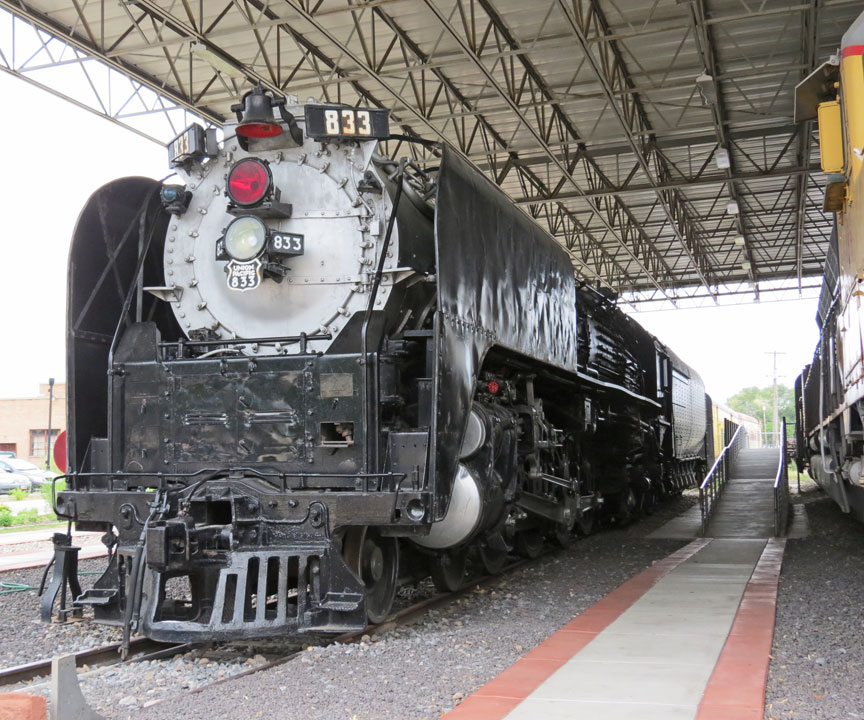
The construction of the current building was completed in 1924 in the Spanish
Colonial Revival (also known as Early Christian/Byzantine) style and is built on
the footprint of the earlier building. It was dedicated on November 22 of that
year, with a series of publicity shots being taken. One of these shots, showing
thirteen young women pulling the first train to arrive at the station by
ribbons, made its way into the La Domenica del Corriere, an Italian newspaper,
with the headline "Curious American Custom". The ceiling of the Grand Lobby,
taking up the center portion of the building, has a height of 56 feet and
extends to the roof. The trusses were originally painted in bright colors with
geometric designs, but have since been painted over with a faux wood grain.
Murals of the construction of the Transcontinental Railroad were painted on the
north and south end of the lobby. The second floors of the north and south wing
were occupied by Southern Pacific, Ogden Union Railway & Depot Co., and Union
Pacific Telegraph Department offices,
.
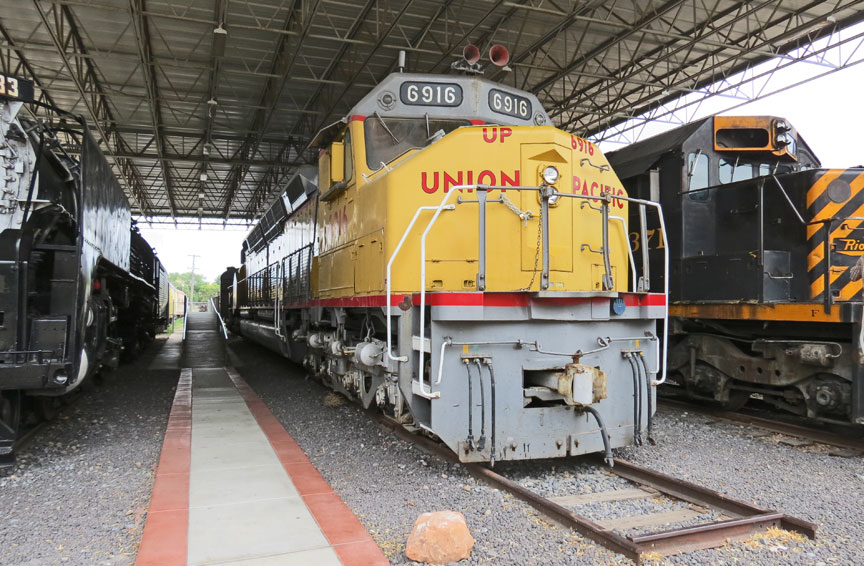
Of special note are the two drinking fountains on either end of the Grand Lobby.
These fountains, surrounded by colored mosaics, were the favorite resting spot
of Ogden Union Railway & Depot Co. Superintendent Hubert Lloyd Bell. At Bell's
passing in 1927 the OUR&D placed a bronze plaque, bearing his likeness, over the
fountain on the north end. The plaque reads "In Memory of Hubert Lloyd Bell
SUPT. O.U.RY. AND D. Co., 1918-1927, A Just Man, A Friend Who Will Be
Remembered".
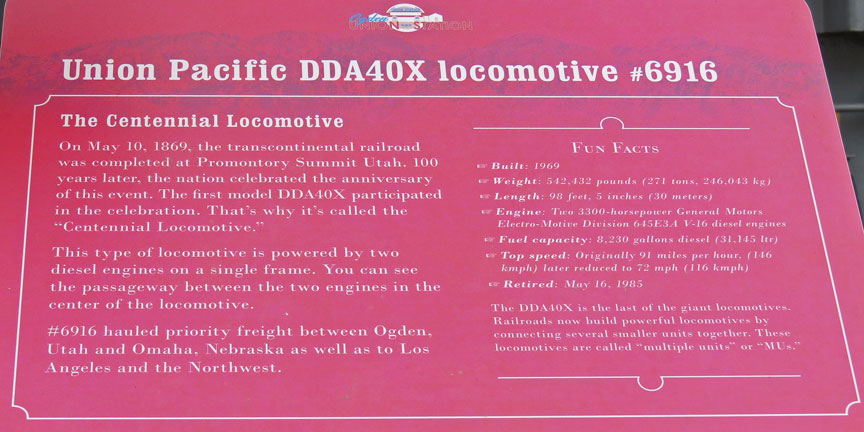
Plans to turn the station into a museum were first brought forward during the
centennial celebration of the driving of the golden spike in 1969. It wasn't
until 1971, when Amtrak formally took over passenger operations through Ogden,
that these plans were taken seriously. The station building was turned over to
Ogden City on a 50-year lease in 1977 and renovations were begun to house the
planned museums. At the dedication ceremony in 1978, Union Pacific ran their
famous UP 8444 (now number 844) at the head of a special passenger train from
Cheyenne, Wyoming, to the new museum. They also donated a steam derrick (built
by Industrial Works) and a steam rotary snow plow (built by ALCO in 1912), which
were the last pieces of steam-powered equipment in use on the Union Pacific
System. In 1988 the State of Utah designated the Union Station as the Utah State
Railroad Museum to handle the railroad artifacts. This spurred a series of
donations by the Union Pacific through the years, including UP 6916, a DD40AX
"Centennial" (one of the largest locomotives ever built), and D&RGW 5371, the
only SD40-T2 "Tunnel Motor" in its original Denver & Rio Grande Western paint
scheme. Railroad equipment was brought in from other places, like UP 833, and
FEF3 class steam locomotive and the largest to be moved by truck, which was
moved from Salt Lake City's Pioneer Park.
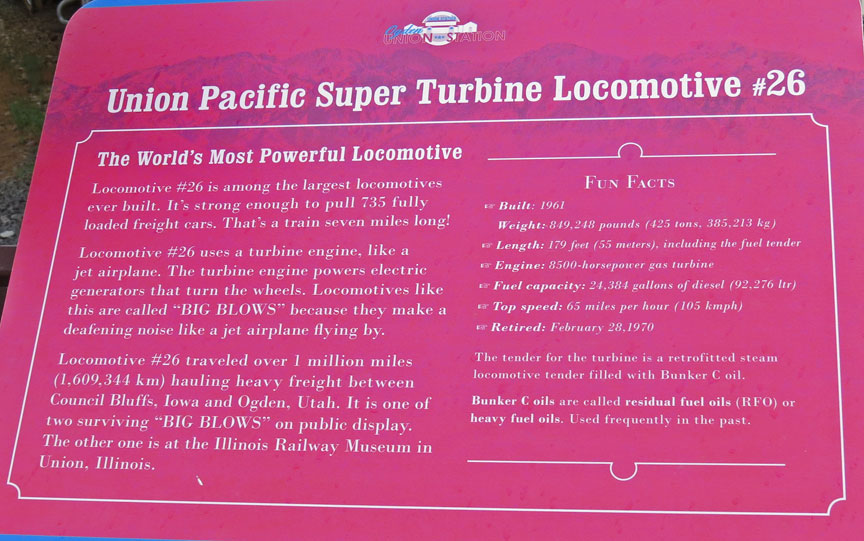
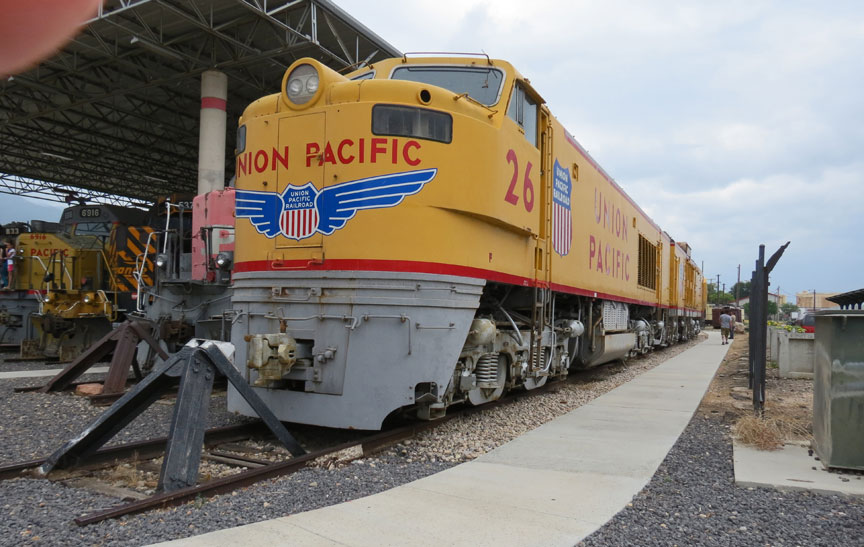
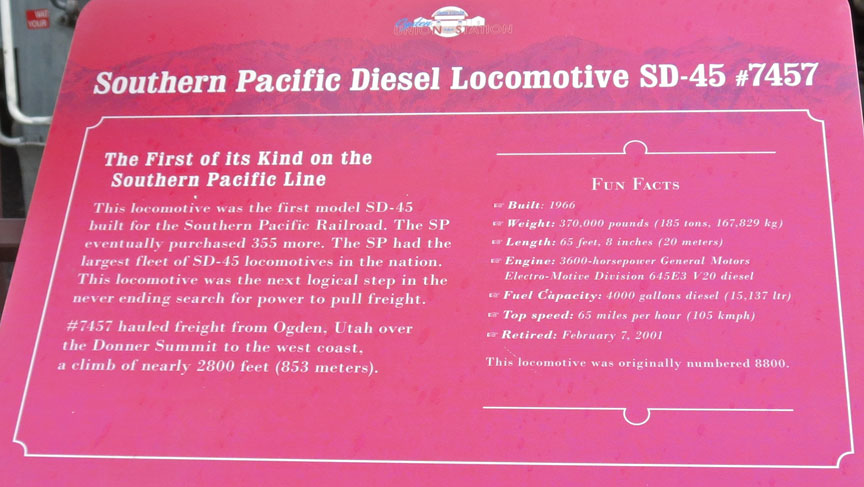
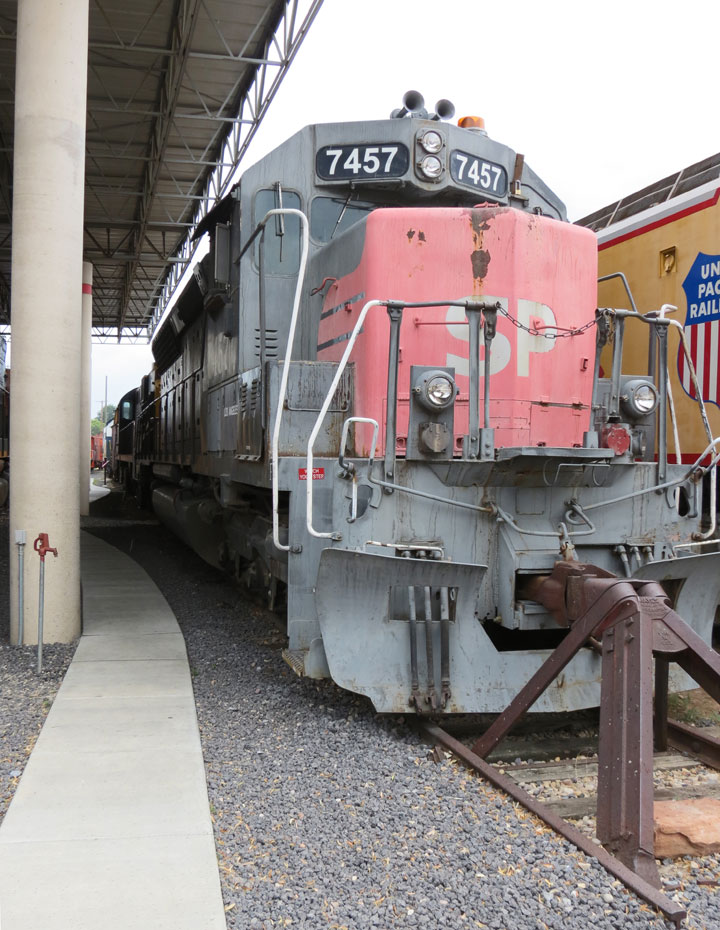
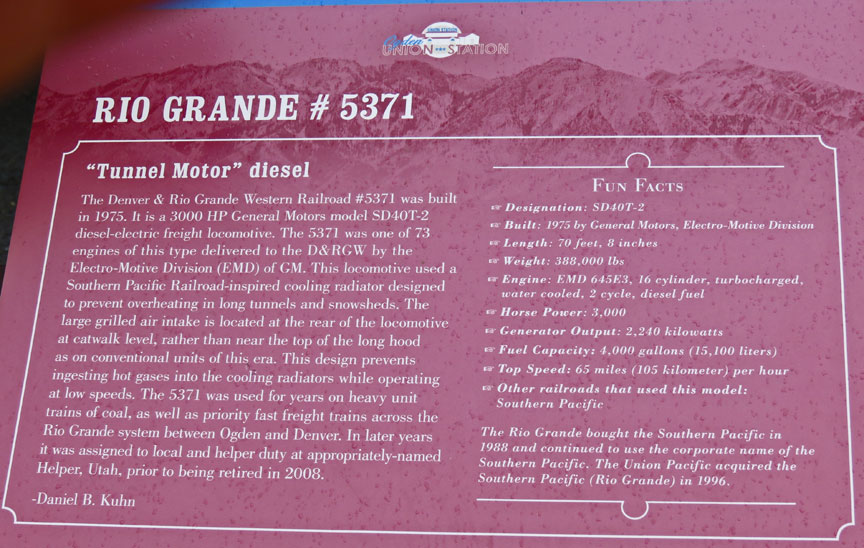
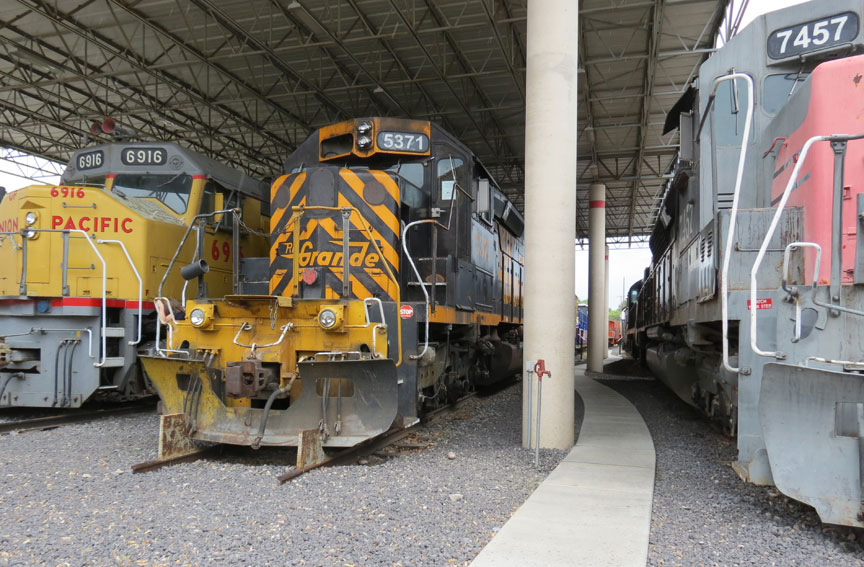
The station building now houses the Utah State Railroad Museum, John M. Browning
Firearms Museum, Warren's Train Shop, Union Grill, the U.S. Forest Service
district office, and a library and archives. It plays host to various
conventions and events, including the annual Hostlers Model Railroad
This building was constructed in 1929 to serve the needs of the United State
Postal Service. It is located directly north of the Union Station building. In
1950 a flat-roofed addition was constructed on the east and was used to sort
mail. The Railway Post office closed in the 1970s.
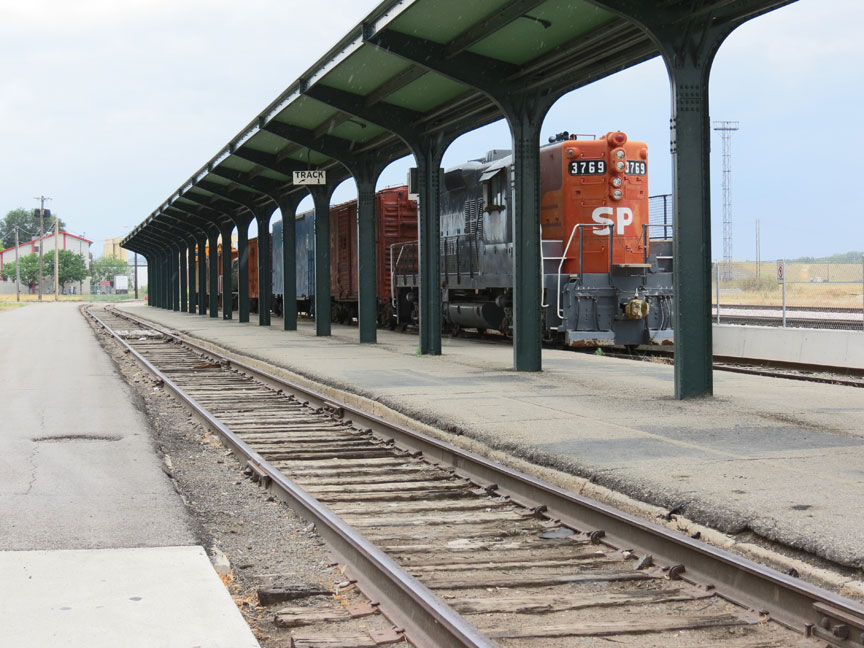
The Butterfly Canopy
The passenger shelter along tracks 1 and 2 is the only remaining canopy of a series of five. The Butterfly Canopy and platforms are host to Union Pacific's Steam Team during their East-West trips over the Transcontinental Railroad route and the former Rio Grande Soldier Summit route. The operating water column at the north end, which is connected to the Ogden City water line, allows the steam locomotives to be serviced conveniently.
Text from Wikipedia